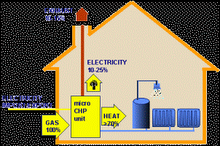It may come as a bit of a shock when they realise that it is not grid parity they will achieve, but tariff parity, so that PV generation will still find itself unable to compete without subsidy in the energy market.
The controversy around the reduction in the UK FIT for PV
towards the end of last year continues, with Friends of the Earth scoring a pyrrhic
legal victory for common nonsense. The
43p/kWh rate will remain until at least 3rd March so we can expect
another brief gold rush over the next few weeks, but this is merely delaying
the inevitable. Perhaps that is all they
were hoping to achieve, in which case it was all a lot of fuss about
nothing. I was somewhat amused to hear
an interview with the owner of one PV installation company claiming that it was
not the reduction in FIT they objected to, but the timing. She claimed that they, along with the PV
industry, had been arguing for a reduced FIT for some time!
“Please stop paying us so much for PV generation. We really don’t want it. We know it will all end in tears.”
Do you recall anyone in the PV industry saying that? I thought not; they were all up to their
snouts in swill at the time anyway.
However, it does rather raise some doubts as to whether FIT
and similar subsidies may not so much drive down PV prices, but quite the
contrary as PV prices become inflated to exploit every last penny of the
subsidy. For, no sooner does the obscene
43p appear to be back on the table than adverts appear exhorting us to get back
in the trough until 3rd March. By the time you read this it
may have changed, but on the day the announcement was made, alongside adverts
which had been in place since the earlier announcement of the reduced FIT offering
3.8kW systems at £7000, new adverts appeared offering exactly the same systems
for considerably more, justified by the higher FIT!
Indeed, a survey of PV systems across Europe reveals a
worrying trend of PV prices directly related to whatever FIT is in place and PV
manufacturers hopping from one market to the next like a plague of locusts
sucking the lifeblood from the gullible taxpayers.
Greg Barker was quite right to denounce the excessive PV
subsidy which was draining all the resources from low carbon electricity to one
sub-optimal technology as “barmy”. Unfortunately,
as a politician at the mercy of the vagaries of ill-informed public opinion he
was forced into a rational, albeit barely credible argument about spreading the
same money thinner to encourage even larger numbers of PV installations.
What he should have had the courage to say, is what his
counterparts in Germany are now saying:
"From the standpoint of the climate, every solar system
is a bad investment"
He is quite right that we have limited resources. The Germans are right that we should make the
best use of those limited resources.
Lets hope that the FIT review does its job properly and concludes that
if climate change is the problem then each technology should be rewarded on its
potential contribution to carbon mitigation rather than how stupidly expensive
it is.
Not only does micro CHP keep you warm in winter, generate
enough electricity to meet all a households needs when it is dark, in winter
and when there is no wind, it also has the lowest cost per tonne of carbon displaced
from central generating plant. To me,
that means it currently represents the best use of resources for a low carbon
domestic heat sector. Maybe if there is something
left in the trough after the PV piggies have had their fill…?
For an analysis of the carbon mitigation potential of micro
CHP, click here
For
additional papers on micro CHP, including the relative carbon mitigation
potential for various microgeneration technologies, click here




No comments:
Post a Comment